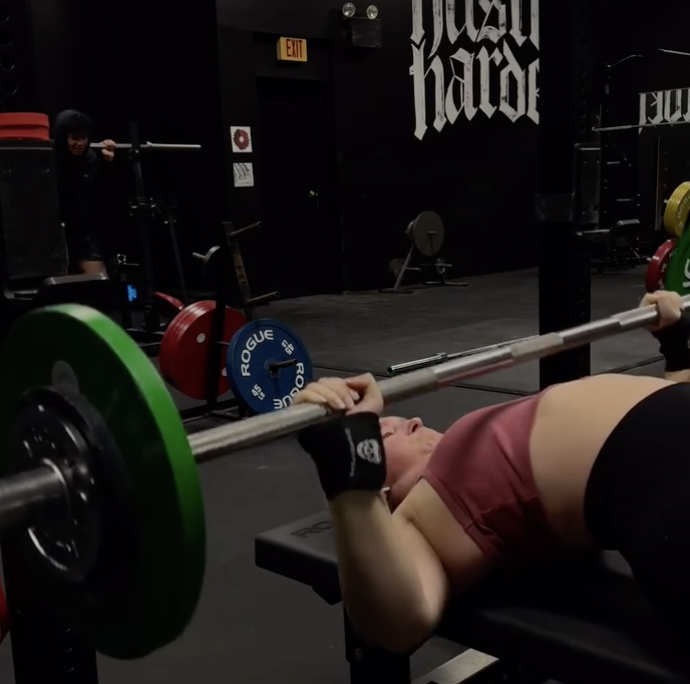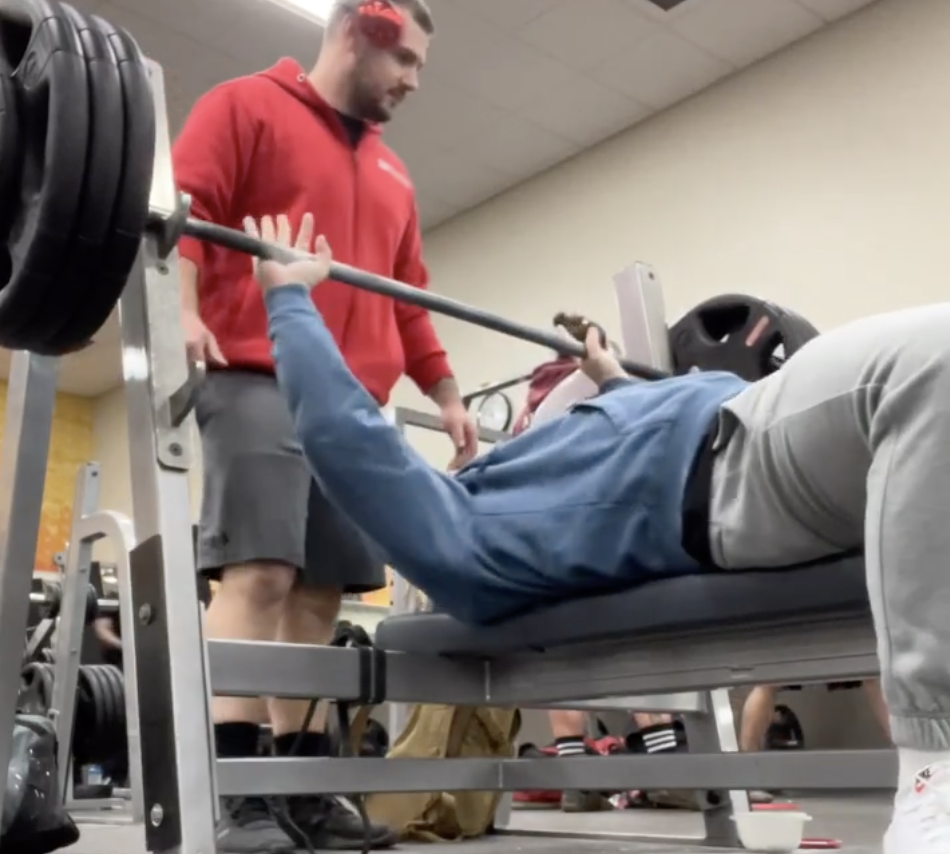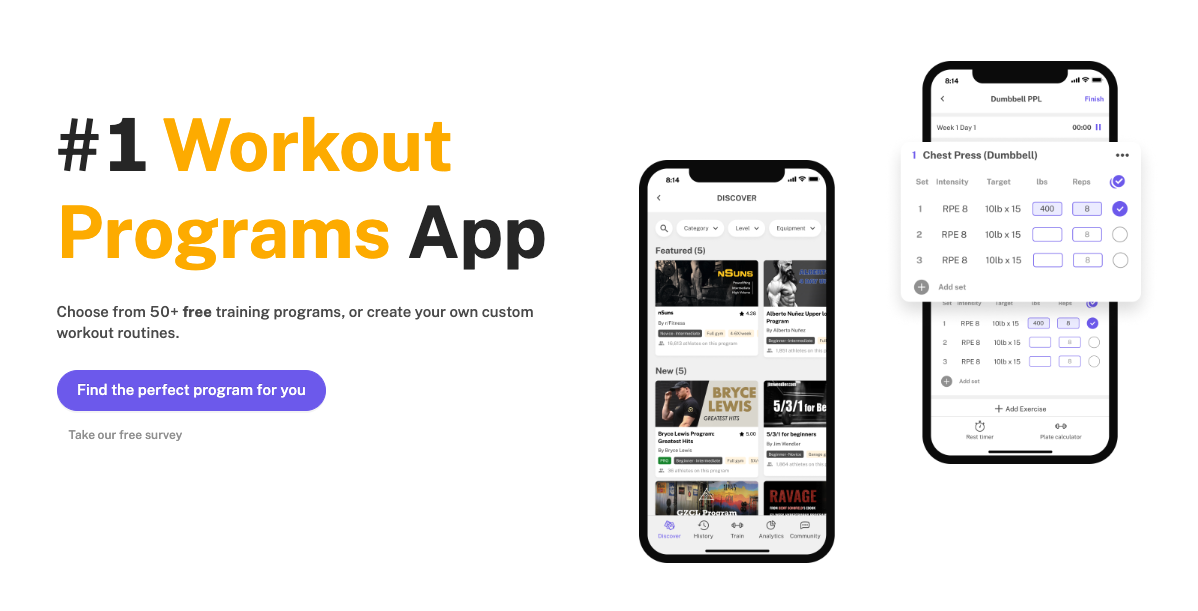Bench Press Showdown: Flat, Incline, and Decline Bench Press
Written by the Boostcamp staff
A gomprehensive guide to the bench press variations: flat, incline, and decline
When it comes to building a powerful and developed chest, there's no denying the significance of the barbell bench press and all of its variations. As one of the most popular and effective chest exercises for powerlifters and bodybuilders alike, the barbell bench press, also known as the chest press, offers various benefits, including increased upper body strength and improved muscle definition. But which variation, whether it be flat, incline, or decline, using either a barbell or a pair of dumbbells, such as the dumbbell bench press, is the best to build the chest?
We are going to take an in-depth look at the flat, incline, and decline bench press and compare their effectiveness in targeting different areas of your chest muscles. By the end, you'll have a better understanding of which bench press variation is right for you.
The Basics of the Bench Press (Barbell)
Before diving into the specifics of each bench press variation, let's first discuss the fundamentals of the bench press itself. The bench press is a popular compound exercise that targets multiple muscles in your upper body, including the pectorals (chest), triceps brachii, and anterior deltoids (front shoulders). In a standard bench press, you lie on a flat bench, grasp a barbell with both hands, lower the barbell to your chest, and then press it back up to the starting position. Another variation is the incline press, where you sit on an incline bench and press the weight up towards the ceiling, emphasizing the anterior deltoids of the shoulder.
Breaking Down the Bench Press Variations

Now let's take a look at the different variations of the bench press.
Flat Bench Press
The flat bench press is the most traditional and widely recognized form of bench pressing. It is performed on a flat bench and targets the overall chest area, specifically the middle and lower pectorals.
Pros of Flat Bench Press
Excellent overall chest development: The flat bench press targets your entire chest area, ensuring balanced and comprehensive muscle growth.
Easily adjustable weights: The flat bench press allows you to easily adjust the weight to accommodate your strength level and workout goals.
Compound movement: As a compound exercise, the flat bench press engages multiple muscle groups simultaneously, leading to improved overall upper body strength and muscle mass.
Cons of Flat Bench Press
Potential for shoulder strain: Improper form during the flat bench press can place excessive strain on the shoulders, increasing the risk of injury.
Comparatively lower upper chest targeting: While the flat bench press effectively targets the overall chest, it may not sufficiently engage the upper chest muscles.
Incline Bench Press
The incline bench press, as the name suggests, is performed on an inclined bench with an angle of approximately 30 to 45 degrees. This variation emphasizes the upper chest muscles (clavicular head of the pectoralis major) and the anterior deltoids more than the flat bench press.
Pros of Incline Bench Press
Targeted upper chest development: The incline bench press is ideal for individuals looking to build the upper chest muscles, offering a greater range of motion and more focused engagement.
Improved shoulder activation: The incline bench press places a greater emphasis on the anterior deltoids, leading to improved shoulder strength and development.
Reduced lower back stress: The inclined position may alleviate lower back stress during the exercise, providing a more comfortable experience for some individuals.
Cons of Incline Bench Press
Decreased weight capacity: Due to the increased focus on the upper chest and shoulders, you may need to use lighter weights compared to the flat bench press.
Potential for incorrect form: The inclined position requires proper form to prevent injury, and some individuals may struggle to maintain correct posture throughout the movement.
Decline Bench Press
The decline bench press is performed on a bench angled downward at approximately 15 to 30 degrees. This variation places a greater emphasis on the lower chest muscles (sternal head of the pectoralis major) and the triceps.
Pros of Decline Bench Press
Targeted lower chest development: The decline bench press effectively isolates and engages the lower chest muscles, helping to create a well-defined lower pec line.
Increased triceps activation: The decline position places more emphasis on the triceps, which can lead to improved triceps strength and development.
Reduced shoulder stress: By targeting the lower chest and triceps, the decline bench press minimizes strain on the shoulder joint, reducing the risk of injury.
Cons of Decline Bench Press
Limited upper chest targeting: Similar to the flat bench press, the decline bench press may not sufficiently engage the upper chest muscles.
Decreased range of motion: The decline position can limit the range of motion compared to flat and incline bench press variations, potentially hindering overall chest development.
Increased difficulty: The decline bench press can be more challenging to set up and perform, particularly for beginners.
Bench Press Selection within a Workout Program
Regardless of the bench press variation you choose, one of the main priorities in any workout regimen is ensuring that the exercises are incorporated within a well-designed and balanced program. A successful fitness routine should not only focus on one muscle group or exercise, but instead aim to target all major muscle groups and incorporate various exercises, including the lifter bench press, to create a comprehensive workout plan.
By integrating a variety of exercises, including the different bench press variations, into your routine, you will promote better overall muscle development and functional strength. Additionally, a well-designed program helps to minimize the risk of injury, improve muscle balance, and prevent plateaus in your fitness progress.
Where to Find the Best Workout Programs
To achieve the best results, consider using a fitness app like Boostcamp to guide you through science-based workout programs tailored to your needs and goals. Boostcamp App offers a wide range of workout plans that incorporate the flat, incline, and decline bench press variations, ensuring that you effectively target and develop your chest muscles, including your upper back. With expert guidance and customizable programs, Boostcamp App is the perfect companion for anyone seeking a well-rounded workout routine.
By using the Boostcamp App, you'll be able to access:
Customized workout programs: Based on your fitness level, goals, and preferences, Boostcamp App creates a personalized workout plan that includes a variety of exercises, such as the different bench press variations.
Science-based training principles: Boostcamp App's workout programs are designed using evidence-based training principles to ensure effective muscle development and progress.
Expert guidance and support: Receive valuable tips, advice, and encouragement from experienced fitness professionals to help you stay on track and achieve your goals.
Progress tracking and analytics: Monitor your progress over time, including improvements in strength and muscle development, to stay motivated and make data-driven decisions about your training.
By incorporating the bench press variations within a well-rounded and well-designed workout program, you'll be well on your way to achieving a powerful and sculpted chest. Boostcamp App is the perfect tool to help you stay on track and optimize your training for the best results.
Bench Press FAQs

What is the primary difference between the flat, incline, and decline bench press?
The main difference between these bench press variations lies in the angle of the bench, which in turn affects the targeted area of the chest muscles. The flat bench press targets the middle and lower chest, the incline bench press focuses on the upper chest, and the decline bench press emphasizes the lower pectoral muscles. Another variation, the close grip bench press, targets the triceps and forearms, while a slightly wider grip will increase the use of the pectorals, allowing for a workout that engages different muscles.
Which bench press variation is the best for overall chest development?
To achieve comprehensive chest development, it's important to incorporate all three bench press variations into your workout routine. This ensures that you target different areas of your chest muscles for well-rounded growth.
How often should I perform bench press exercises?
The frequency of bench press exercises depends on your fitness level, goals, and workout program. Generally, it is recommended to perform chest exercises, including the bench press, 1-2 times per week, allowing adequate recovery time between sessions.
Can I perform all three bench press variations in the same workout?
Yes, you can perform all three variations in the same workout, but it is not necessary. You can try different chest exercises, like with dumbbells, cables, and machines to make your training more diverse. This can help to target different areas of your chest muscles and provide a comprehensive chest workout. Be sure to adjust the weights and reps according to your fitness level and goals.
Can beginners perform all bench press variations?
Yes, beginners can perform all bench press variations. However, it is essential to start with lighter weights and focus on proper form and technique to minimize the risk of injury.
How can I prevent shoulder injuries while performing bench press exercises?
To prevent shoulder injuries, focus on maintaining proper form, using appropriate weights, and warming up your muscles before performing any bench press exercises. Additionally, incorporating shoulder-strengthening exercises in your workout routine can help improve shoulder stability and reduce the risk of injury.
Should I use free weights or a machine for bench press exercises?
Both free weights (barbells and dumbbells) and machines can be effective for bench press exercises, depending on your goals and preferences. Free weights tend to provide a greater range of motion and engage stabilizing muscles, while machines can offer more controlled movements and better support for beginners.
How can I improve my bench press strength?
To improve your bench press strength and hypertrophy, focus on consistent progressive overload (gradually increasing the weight or number of repetitions, or intensity), proper form and technique, and incorporating accessory exercises that target the chest, triceps, and shoulders. The best way is to follow proven and science-based programs that you can find for free on Boostcamp App. Incorporate moderate to heavy weight in your training, aiming for three to five sets of five to 15 reps until failure. Rest for 45 to 90 seconds between sets, maintaining tightness in your upper back throughout the entire lift.
How wide should my grip be when performing bench press exercises?
Your grip width will depend on your individual anatomy, preferences, and goals. In general, a slightly wider-than-shoulder-width grip is recommended for most individuals. Experiment with different grip widths to determine what feels most comfortable and effective for you.
Can I target specific areas of my chest muscles with different bench press variations?
Yes, the different bench press variations target specific areas of the chest muscles. The flat bench press targets the middle and lower chest, the incline bench press focuses on the upper chest, and the decline bench press emphasizes the lower chest.
Best Bench Press Variation Conclusion
Each bench press variation – flat, incline, and decline – offers unique benefits and targets different areas of the chest muscles. To achieve a well-rounded chest development, consider incorporating all three variations into your workout routine.
Ultimately, the best bench press variation for you will depend on your individual goals, preferences, and limitations. Be sure to focus on proper form and technique to minimize the risk of injury and maximize the effectiveness of each exercise.
That being said, check out the Boostcamp App for over 50 FREE programs or even create your own. Boostcamp also allows you to track progress, so you know how to adjust each week. Be sure to also follow Boostcamp on Instagram and subscribe on YouTube!


